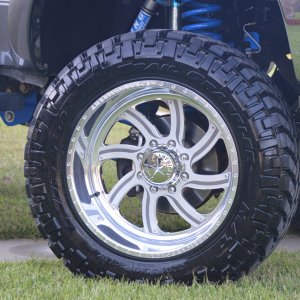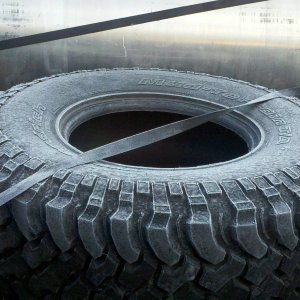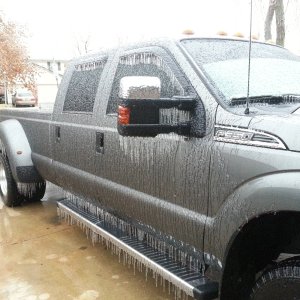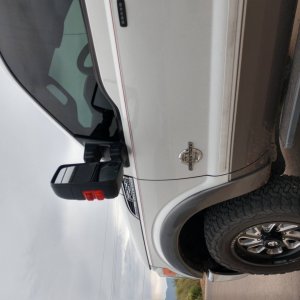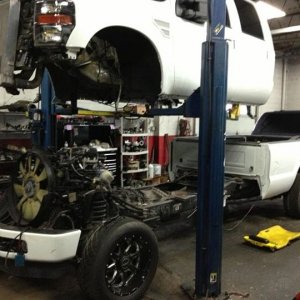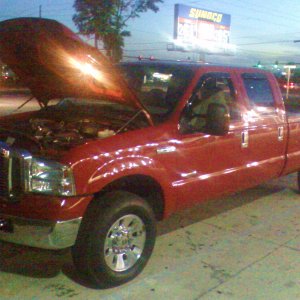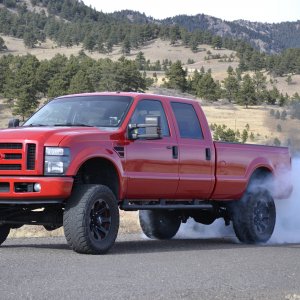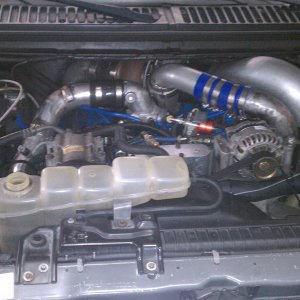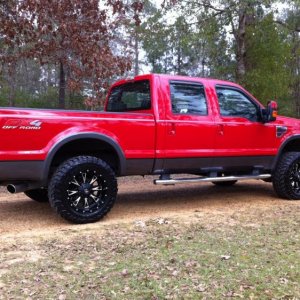footlong70
New member
Hey guys, I know this is nothing ground breaking or new but I think it's some good food for thought for guys playing with their own tuning, or something to inquire about when getting custom tunes written.
I just finished my next portion of mods. Turbos, manifolds/pipes, valvetrain, intake mani, No Limit intake and hotside pipe, and a bunch of other things... Same HS 300 File. Anyways, prior to the No Limit intake I ran an S&B for 3 years. First test drive after the full install was very pleasing for the most part however I noticed some slight flatter power lower to mid rpm. Definitely slower spool, needed more throttle to get the same seat of the pants feel. Just a slight less seat of the pants feel rolling into the throttle until about 40-50%. Even a bit less smoke down low spooling which should be the opposite with slower spooling larger turbos. Don't get me wrong, the truck felt like a monster, but so much of it was up top. My truck spends a lot of time down low with 38's and 3.55's so it's pretty important to me. I know its not very scientific but I know my truck VERY well. I pressure tested the hell out of everything (even the intake on the heads) so I know leaks were not an issue. With so many changes and larger turbos though its kind of a long shot to pin point the change low-mid range rpm. Most would guess bigger wheels, more lag, that's life... However I did get thinking about the No limit intake and the diameter size change. I've dealt with MAF adjustments on gas motors plenty which are a must with piping changes. So I thought for sure the canned tuning needs scaling. I took some measurements:
Stock intake diameter at MAF: 4.125" = 13.36"squared area
No Limit Intake Diameter at MAF 5" = 19.63"squared area
19.63 - 13.36 = 6.27 difference / 13.36 = 0.4693 x 100 = 46.93% increased area at the MAF.
So there is clearly alot of air the MAF/PCM are not seeing. Therefore were running lean initially. The MAF tables do max out up top so it doesn't matter after so much air is flowing however down low-mid flow is going to run lean, slowing spool/less power potential low-mid spool.
Using MCC I took the MAF rate map and multiplied the entire map by 1.4693 to get my 46.93% increase. Loaded her up, took her for a spin, and mission accomplished. The sensitive, powerful throttle feel down low is back and drives just like prior to the mods, just much stronger. Rolling into the throttle really throws you back low-mid spool. Lag feels identical to stock, so very quick to light. No real increase in smoke, truck runs ridiculously clean. Also Mileage wise, I did a 200km trip prior to Map increase, and the same 200km trip the next day after the adjustment and the mileage according to the Lie o meter was the exact same, even within a couple tenths better(It's not a perfect method to determine mileage I know but it will give a guy a decent basis for increase or decrease). So I'm very impressed with the adjustment and pleased I didn't pay a couple hundred bucks for custom tuning that took 5 min. I'm sure gearhead or any of the other renowned custom tuners know this and it's old news but for those that like to mess around with their own tuning. Also since so many are running No Limit intakes I would think this should be common knowledge for everyone. Hope this helps some people.
I just finished my next portion of mods. Turbos, manifolds/pipes, valvetrain, intake mani, No Limit intake and hotside pipe, and a bunch of other things... Same HS 300 File. Anyways, prior to the No Limit intake I ran an S&B for 3 years. First test drive after the full install was very pleasing for the most part however I noticed some slight flatter power lower to mid rpm. Definitely slower spool, needed more throttle to get the same seat of the pants feel. Just a slight less seat of the pants feel rolling into the throttle until about 40-50%. Even a bit less smoke down low spooling which should be the opposite with slower spooling larger turbos. Don't get me wrong, the truck felt like a monster, but so much of it was up top. My truck spends a lot of time down low with 38's and 3.55's so it's pretty important to me. I know its not very scientific but I know my truck VERY well. I pressure tested the hell out of everything (even the intake on the heads) so I know leaks were not an issue. With so many changes and larger turbos though its kind of a long shot to pin point the change low-mid range rpm. Most would guess bigger wheels, more lag, that's life... However I did get thinking about the No limit intake and the diameter size change. I've dealt with MAF adjustments on gas motors plenty which are a must with piping changes. So I thought for sure the canned tuning needs scaling. I took some measurements:
Stock intake diameter at MAF: 4.125" = 13.36"squared area
No Limit Intake Diameter at MAF 5" = 19.63"squared area
19.63 - 13.36 = 6.27 difference / 13.36 = 0.4693 x 100 = 46.93% increased area at the MAF.
So there is clearly alot of air the MAF/PCM are not seeing. Therefore were running lean initially. The MAF tables do max out up top so it doesn't matter after so much air is flowing however down low-mid flow is going to run lean, slowing spool/less power potential low-mid spool.
Using MCC I took the MAF rate map and multiplied the entire map by 1.4693 to get my 46.93% increase. Loaded her up, took her for a spin, and mission accomplished. The sensitive, powerful throttle feel down low is back and drives just like prior to the mods, just much stronger. Rolling into the throttle really throws you back low-mid spool. Lag feels identical to stock, so very quick to light. No real increase in smoke, truck runs ridiculously clean. Also Mileage wise, I did a 200km trip prior to Map increase, and the same 200km trip the next day after the adjustment and the mileage according to the Lie o meter was the exact same, even within a couple tenths better(It's not a perfect method to determine mileage I know but it will give a guy a decent basis for increase or decrease). So I'm very impressed with the adjustment and pleased I didn't pay a couple hundred bucks for custom tuning that took 5 min. I'm sure gearhead or any of the other renowned custom tuners know this and it's old news but for those that like to mess around with their own tuning. Also since so many are running No Limit intakes I would think this should be common knowledge for everyone. Hope this helps some people.

